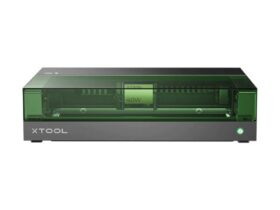In the realm of oil and gas exploration, accurate depth conversion is crucial for understanding subsurface structures and making informed decisions. Velit software packages have emerged as indispensable tools in this field, providing geoscientists and petroleum engineers with the means to convert seismic data into precise depth models. In this article, we explore the significance of Velit software in depth conversion, highlighting key features and recent developments that have propelled these packages to the forefront of subsurface mapping technology.
The Essence of Depth Conversion: Bridging Seismic and Geological Realms
Depth conversion is the process of converting seismic data, typically collected in time, into depth models that reflect the actual subsurface structure. Velit software packages specialize in this intricate task, acting as a bridge between the seismic and geological domains. By providing accurate depth information, these tools enable more informed decision-making in oil and gas exploration, reservoir characterization, and field development.
Velit Software Features: Precision and Flexibility
Velit software packages are renowned for their precision and flexibility. They employ sophisticated algorithms that consider various factors, including velocity models, to transform seismic data into depth representations. These tools offer users the flexibility to incorporate complex geological features, such as faults and salt bodies, ensuring that the resulting depth models accurately reflect the subsurface complexity.
Velocity Modelling Advancements: Improving Accuracy
One of the critical components of depth conversion is velocity modelling, and Velit software has seen significant advancements in this area. Advanced velocity modelling algorithms enhance the accuracy of depth conversion by accounting for variations in subsurface velocity. This is particularly crucial in regions with complex geological structures, where traditional methods may fall short.
Integration of Machine Learning: Enhancing Interpretation
Recent developments in Velit software packages include the integration of machine learning techniques to enhance interpretation and decision-making. Machine learning algorithms can analyse large datasets, identify patterns, and improve the accuracy of depth conversion by learning from diverse geological scenarios. This integration not only accelerates the depth conversion process but also enhances the reliability of the resulting models.
Multi-Physics Approaches: Comprehensive Subsurface Insights
To address the challenges posed by diverse geological settings, Velit software packages are increasingly adopting multi-physics approaches. By incorporating additional data, such as gravity and magnetic measurements, these tools provide a more comprehensive understanding of subsurface structures. This holistic approach enhances the accuracy and reliability of depth models, especially in areas with complex geological features.
User-Friendly Interfaces: Empowering Geoscientists
As the demand for depth conversion capabilities continues to grow, Velit software developers have prioritized user-friendly interfaces. Intuitive interfaces empower geoscientists, allowing them to navigate the software seamlessly and efficiently. This focus on user experience ensures that professionals can harness the full potential of Velit software packages without being encumbered by steep learning curves.
The advancements in Velit software packages for depth conversion represent a paradigm shift in subsurface mapping and exploration. These tools, with their precision, flexibility, and integration of cutting-edge technologies like machine learning, have become indispensable assets for geoscientists and petroleum engineers. As the demand for accurate subsurface insights intensifies, the continuous development of Velit software packages promises to unlock new frontiers in our understanding of the Earth’s hidden depths, shaping the future of oil and gas exploration.










